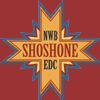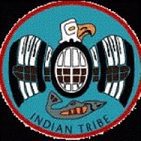The Fort Hall Indian Health Service (I.H.S) and Shoshone-Bannock Tribes Tribal Health and Human Services (THHS) department have been jointly accredited through the Accreditation Association for Ambulatory Health Care, Inc. (AAAHC) since 2000.
The Not-tsoo Gah-nee Health Clinic is a 28,915 square foot out-patient clinic, which opened October 9, 1990. Direct ambulatory health care and services are provided to members of the Shoshone-Bannock Tribes and other eligible federally recognized American Indian and Alaska Natives. This includes medical, nursing, pharmacy, dental, optometry, radiology, lab services, including referrals to the Tribes’ Purchased and Referred Care Program for specialty care.
Tribal Health Administration provides oversight and assistance in regards to personnel issues, budgets, information systems, contracts, grants, vehicles, purchasing and property. THHS Administration maintains the computer network and assists providers in the use of the Electronic Health Record, RPMS, Accucare, Behavioral Health GUI and the IHS terminal servers. The Tribal Health Business Office bills third-party insurance in order to provide income to expand services provided to eligible patients.
The staff positions are tribal and federal hires (IHS).
The Tribal Health and Human Services Department initiated the concept of a “Wellness Center” in their 2000 strategic plan, as requested by the tribal community. In 2006, the Council approved the university-researched feasibility study to assess how a Wellness Center would serve the community’s health needs and disparities, among them, heart disease and diabetes.
Community Health Nursing consists of the Maternal Child Health and Public Health Nursing programs. Services available: Pediatric Clinic, Women’s Clinic, Immunizations, Prenatal and Postpartum Education, Health, Home Visits, Discharge Planning, Elderly Surveillance and the Personal Care Provider program.
Community Health Nursing program collaborated with other local agencies in support of a CNA program for tribal members with 17/22 graduates.

The Four Directions Treatment Center is a tribally operated alcohol/drug treatment program located on the Shoshone-Bannock Indian reservation in Fort Hall, Idaho. The program strives to provide the highest level of quality treatment services as well as community, culturally-based and holistic treatment approaches. The on-site services offered are the adult primary residential treatment, adult outpatient, adult intensive outpatient and adolescent outpatient.
The reservation was established by an Executive Order under the terms of the Fort Bridger Treaty of 1868. It originally contained 1.8 million acres, an amount that was reduced to 1.2 million acres in 1872 as a result of a survey error. The reservation was further reduced to its present size through subsequent legislation and the allotment process.
Located in southeastern Idaho on the Snake River plain, north of Pocatello over four counties: Bingham, Power, Bannock and Caribou. The Reservation is divided into five districts: Fort Hall, Lincoln Creek, Ross Fork, Gibson, and Bannock Creek. Currently, 97% of the Reservation lands are owned by the Tribes and individual Indian ownership. The tribal government offices and most tribal business enterprises are located eight miles north of Pocatello in Fort Hall.The Town of Fort Hall is small and unincorporated with an elevation of 4,754 ft. It was one of the first permanent Europe-American settlements in Idaho, established in 1834 as a trading post. Military post started in 1849. The original Fort was on the bank of the Snake River 11 miles west of the present site. It is a few miles north of Pocatello. Tribal office is on the Fort Hall campus east of the townsite.
The Tribes’ ancestral hunting range extends east throughout the nearby Grand Teton and Yellowstone Basin.
Principal dialects of Shoshoni include Western Shoshoni in Nevada, Gosiute in western Utah, Northern Shoshoni in southern Idaho and northern Utah, and Eastern Shoshoni in Wyoming.
Presently, dictionaries in both the Bannock and Shoshone languages are being developed and will be an ongoing project as many words especially in the Bannock language is being discovered since very few people speak this language.
A pronunciation system is being developed that will be easy for tribal members to understand, comprehend and relate to. There is presently an International Phonetic Alphabet based system used that is hard for the general population untrained in the use of this system to understand, so changes will be made to accommodate tribal members. The language still remains one of America’s healthier indigenous languages because children are acquiring it as their first language and the Shoshone Nation is involved in keeping the language alive by teaching it in schools on the Wind River Reservation and using technology to preserve it for the future.
A recent economic impact study found that the Shoshone-Bannock Tribes government, businesses, support agencies and lands generate more than 4,000 jobs and add $330 million annually to the eastern Idaho economy. The Shoshone-Bannock Tribes, Inc. became a federally chartered corporation under the Indian Re-organization Act on April 17, 1937.
Through its self-governing rights afforded under the Fort Bridger Treaty of 1868 and the Indian Reorganization Act of 1934, the Tribes manages its own schools, post office, grocery store, waste disposal, agriculture and commercial businesses, rural transits, casinos, and more.
The Fort Hall Indian Reservation is a Federally-recognized Tribal reservation of the Shoshone & Bannock People. The Tribes are composed of several Shoshone and Bannock bands that were forced to the Fort Hall Reservation, which eventually became the Shoshone-Bannock Tribes. Through its self-governing rights afforded under the Fort Bridger Treaty of 1868 and the Indian Reorganization Act of 1934, the Tribes manages its own schools, post office, grocery store, waste disposal, agriculture and commercial businesses, rural transits, casinos, and more. The Fort Hall Business Council is the official governing body of the Shoshone-Bannock Tribes, Inc. The terms of office are two years. Each year the council elects its own chairman, vice-chair, and sergeant-at-arms.
Tribally owned 251,890 acres
Individually owned (BIA realty, 2004) 243,480 acres
Federal trust (BIA realty, 2004) 32,632.88 acres
High school graduate or higher, (2009-2013 ACS) 77.6%
Bachelor’s degree or higher (2009-2013 ACS) 11.5%
Unemployment rate (2009-2013 ACS) 17.6%
Per capita income (2009-2013 ACS) $16,276
The Coeur d’Alene Tribe and City of Plummer, Idaho had the vision to establish a highly successful basic primary medical and dental health care system and address the acute health care needs of the community. Because of the strong demand for services, a Phase II plan was developed and the facility was expanded from 6,750 square feet of space to nearly 17,000 square feet in February, 1994. This expansion provided additional medical exam rooms, a five chair dental wing, increased space for pharmacy services, counseling, community health programs, administrative offices, and conference rooms.
Tribal website: https://www.sbtribes.com/
Administration Phone: (208) 478-3769
Clinic website: https://www.ihs.gov/Portland/healthcarefacilities/forthall/
Clinic Phone: (208) 238-5427
Shoshone-Bannock Tribes
Not-tsoo Gah-nee Health Center
Fort Hall Service Unit
P.O. Box 717
Fort Hall, ID 83203
Fax: (208) 238-5463
Phone: (208) 238-2400
Webpage: https://www.ihs.gov/Portland/healthcarefacilities/forthall/
Member Tribes










































